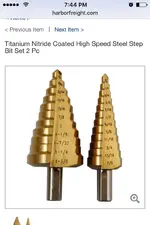I did get an email from Dave but he would not answer any questions and told me if I did not like it to return the plans and he would refund my money! That is about the most rude response he could have given. The amount of time he took to write the reply he could have answered my questions. An honest person would have apologized and explained.
If you haven't wasted your money on the plans yet, don't.
When I get all this figured out and working I will make a set of complete plans so anyone can make the nozzle.
Sounds like someone needs to hold your hand and tell you, your a good boy, it'll be ok... His plans are complete and it's not rocket science... So you have one pump when you need double that...
Here's an old post that will give you some more info but look at the plans again until you figure them out... It's been 12 years since I've seen them but the size of pipe was at the top above the list... Don't be trashing people just because you need someone to hold your hand. If you can't figure it out then send him the plans back and he already told you that he would refund your money. Aren't you the kind of guy that can figure things out for himself and get the job done?
>>
Dry land/Dry dredging?
expanded metal tests
Venturi-Power Jet
The short answer is that the Vortxrex is based on the old Hydraulic Elevators which where used to lift gravel & water out of deep pits, even well below the water table.
You can demonstrate the same principal with a suction nozzle by bypassing a portion of the high pressure water from the venturi and using it to wash material down to the nozzle entrance where it is picked up. It does work, but the amount of water you can bypass is very limited as well as how far you can lift it.
The 4" vortxrex machine uses 2- 8HP engines with the old style 1.5 x 1.5 Keene Pump (or one 16HP engine with the 355s pump)
Each pump produces approx 175 GPM & head pressure of approx 175 Feet
1/2 of the water can be diverted & picked up by the nozzle or 175 gpm, while still producing enough suction to lift the same size rocks & materials 6+ feet out of the hole.
The nozzles are suspended by a gantry set up next to the hole, kind of like a giant marionette & you can raise or lower the nozzle assy into the hole as the dig progresses.
You don't move the nozzle constantly into the gravel face they way you do with a dredge, the nozzle actually stays in one location at the lowest part of the hole, then the bypassed water & material flows to it, where it is picked up, lifted out & up, and then out to the recovery system. This is a big advantage as you only have to move the oversize material out of the hole by hand & the undersized moves quite automatically to the nozzle where it is picked up... As you move the large rocks out - more undersize is freed up to flow to the nozzle & the material flow becomes very uniform which also helps the recovery.
The air/water/gravel mixture that is pulled into the nozzle is compressed into a gas mixture (not liquid) and it travels through the pipes VERY quickly, (much faster than in a underwater dredge) this is great for excavating the gravel quickly, but the air is detrimental to the recovery & must be removed before the slurry reaches the sluicebox - this is accomplished with a large ABS culvert, which the second jet discharges into - as well as the large open header at the sluicebox.
Dave Frank
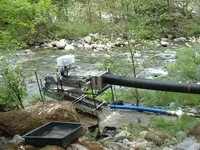

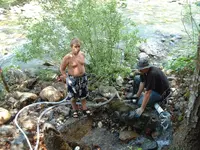
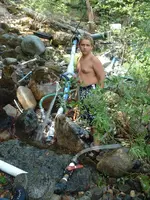
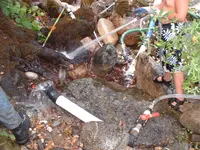
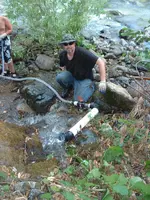
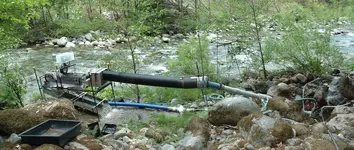
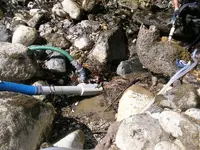
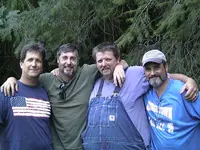
Look close at the pics, the sizes are easily distinguished and your set up can vary without any problem. But you will need another pump. He was using the 16hp/ P355s in these pics.












 You will want a minimum 1" blaster hose. You can always turn it down but the 1" hardline firehose makes a great blaster. Here's some more links from the 49ermike archives. -
You will want a minimum 1" blaster hose. You can always turn it down but the 1" hardline firehose makes a great blaster. Here's some more links from the 49ermike archives. - 
 sometimes my post will take and sometimes it wont! Bill- saf Please resend me your email. I accedentially deleted the one you sent this morning. It was a F.O.G. monument!
sometimes my post will take and sometimes it wont! Bill- saf Please resend me your email. I accedentially deleted the one you sent this morning. It was a F.O.G. monument!